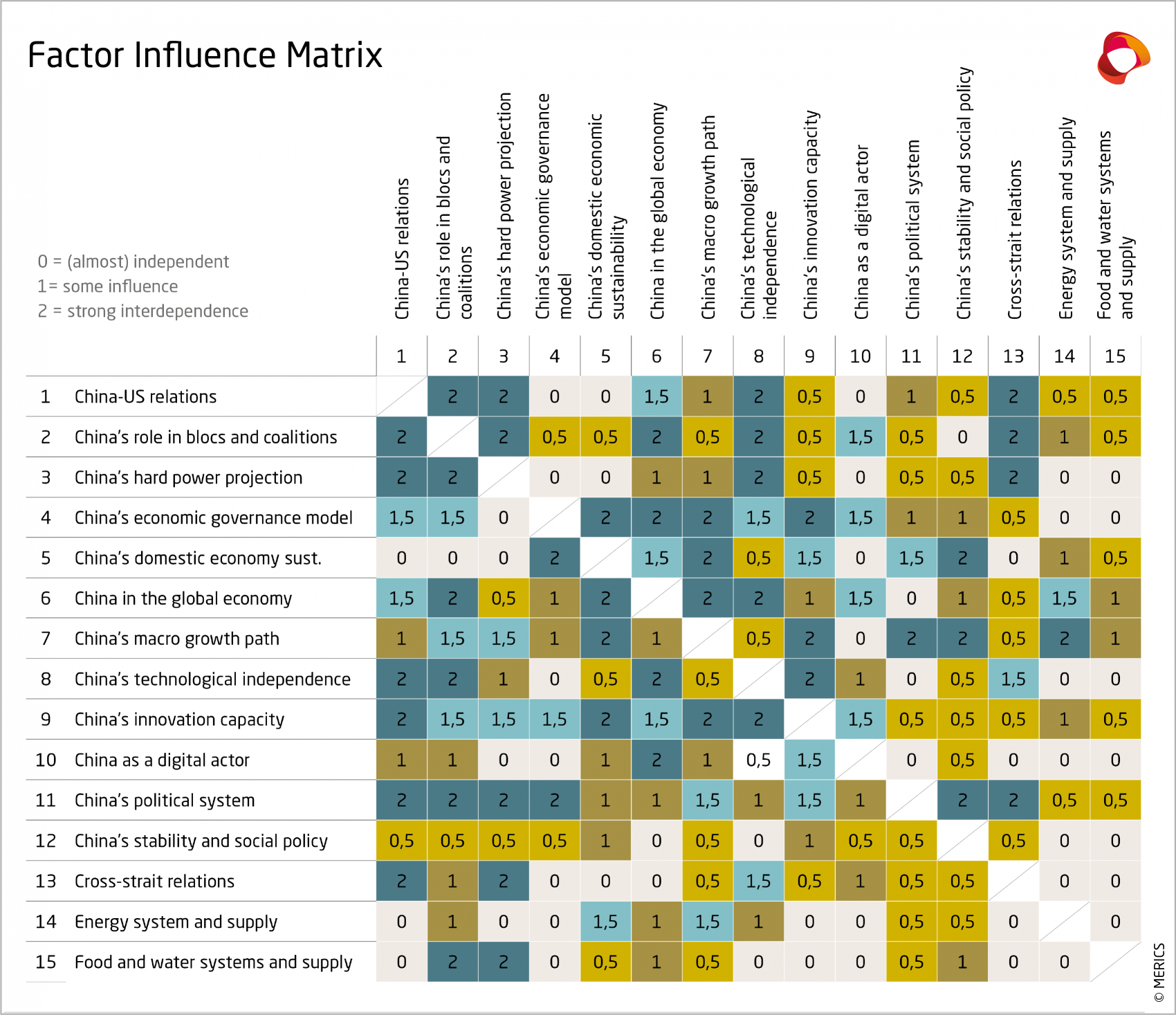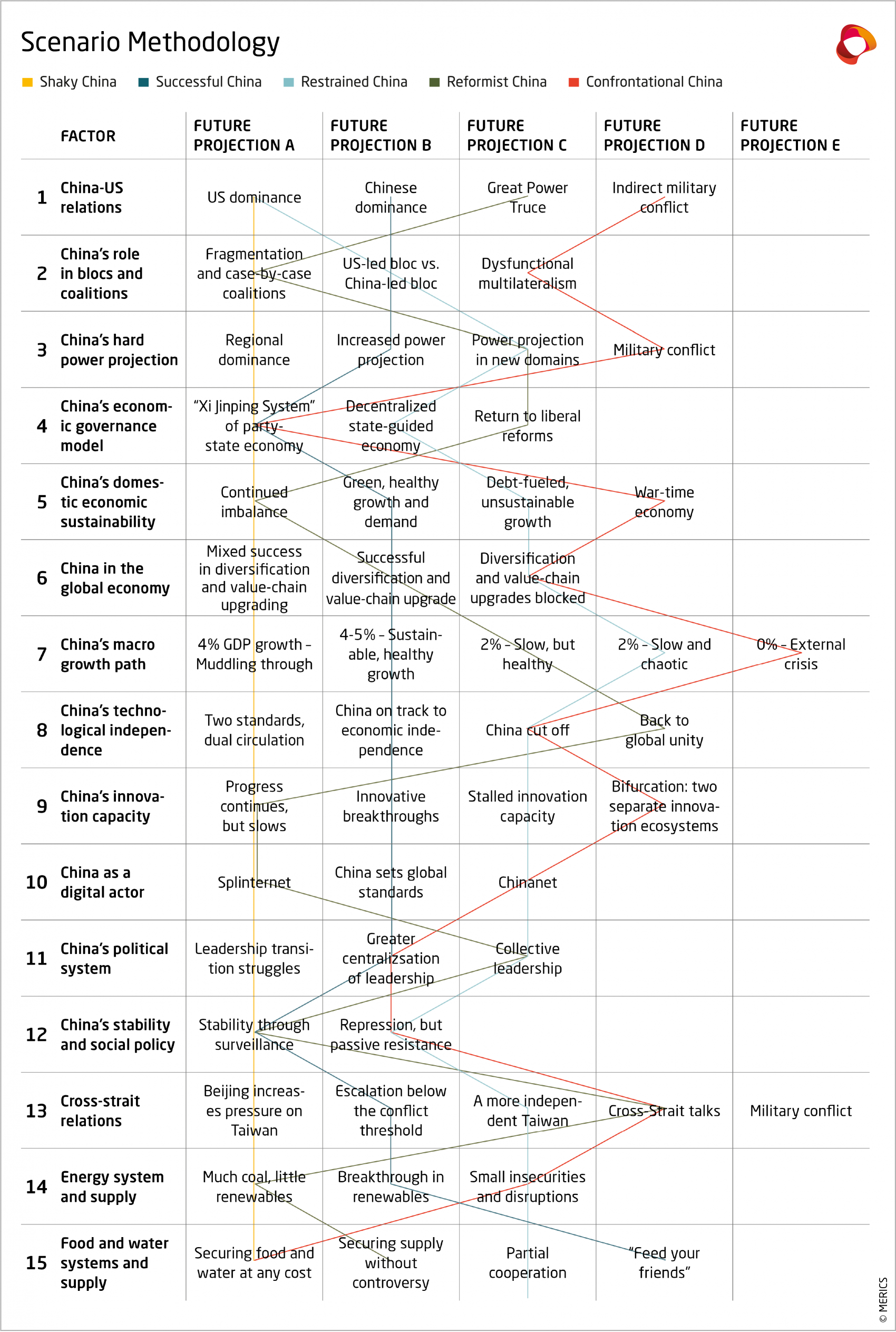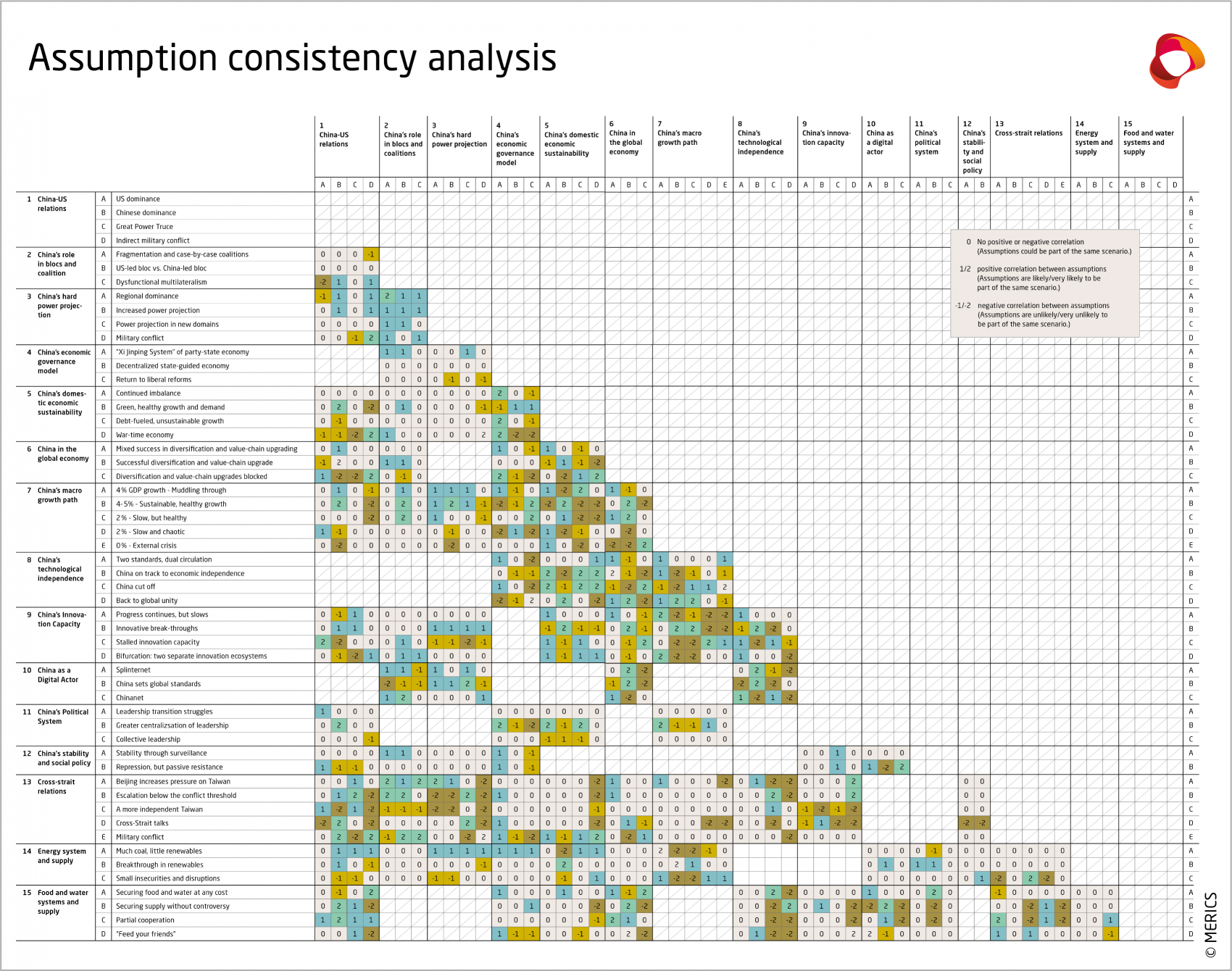

Scenario methodology
You are reading the "Scenario methodology" chapter of the report "Shaky China - Five scenarios for Xi Jinping's third term". Click here to go back to the table of contents.
The scenario method is a useful tool to prepare for the unpredictability of future developments. It can help us to take advantage of the resulting opportunities, while minimizing risks and perhaps even turning them into opportunities. The goal is to enhance capacity to act strategically rather than merely reacting.
The scenarios described in this study were developed at MERICS in 2022, with methodological guidance from the Fraunhofer Institute for Systems and Innovation Research (ISI). The scenarios described here do not imply an expectation that any of them will occur in their pure form. However, they identify key factors, analyze their interactions and seek to create plausible, coherent pictures of the future.
Methodologically, the scenarios were developed in several steps. The initial question was: "How might China develop during the five years of President Xi Jinping's third term in office, which lasts till 2027?" Over several workshops, this question was broken down a) into sub-areas relevant to overall developments b) for which reasonably precise assumptions or mini-scenarios could be developed. From the initial 40 areas, a set of 15 key factors was selected that could be used to draw a reasonably comprehensive picture of China’s development. They include political factors (such as the political system or China's role in the world), economic factors (such as growth paths or domestic and foreign economic developments) and technological factors (such China's technological independence).
For each of these 15 variables, workshops were held to develop and discuss several future assumptions that were as clear-cut as possible. Although extreme and disruptive developments were also considered, only assumptions that seemed more realistic and probable were included in the further elaboration stage. For instance, in workshops on China's political system, the idea that a revolution might push the CCP out of power was played with. However, any such event seemed too unlikely and its pathway too unpredictable to make it worthwhile planning for this eventuality. Only upheavals that are conceivable under CCP rule were included in the process of further elaboration (such as a return to collective leadership after the end to the Xi era, whenever that might happen).
A subsequent influence and consistency analysis assessed the likelihood of individual manifestations occurring together. Did they favor each other? Were they mutually exclusive? Or did they have no influence on each other? For example, was it conceivable that China would engage in a military conflict over Taiwan in the coming years while simultaneously ending its rivalry with the United States? Given current developments on both sides, this was all but ruled out in the next five years. The assumptions made in the consistency analysis can be traced in this overview.
Subsequently, software was used to check for consistent combinations across the multitude of factors, to identify scenarios containing a largely consistent set of future assumptions that are free of major contradictions. From these, the five scenarios outlined in this publication were developed in further workshops and are presented here.
You were reading the "Scenario methodology" chapter of the report "Shaky China - Five scenarios for Xi Jinping's third term". Click here to go back to the table of contents.




